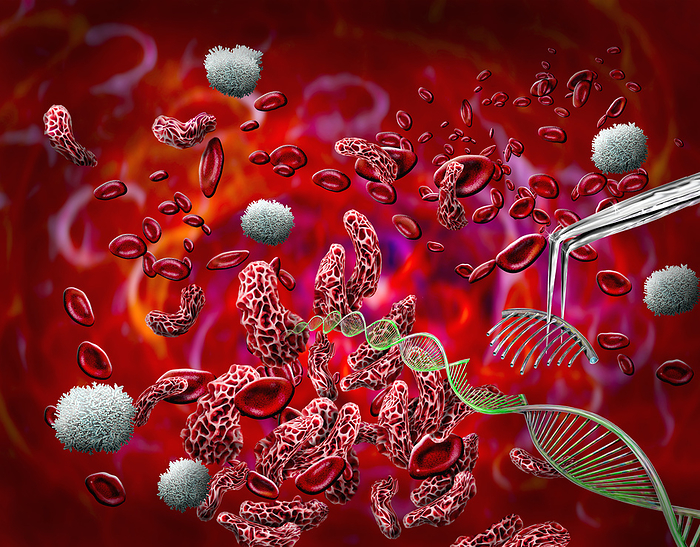
RM
CRISPR treatment for sickle cell anaemia, conceptual illustration
CRISPR treatment for sickle cell anaemia, conceptual illustration. Red blood cells affected by sickle cell anaemia (red and white) having their DNA (deoxyribonucleic acid, green double helix) repaired using CRISPR-Cas9 gene editing. Sickle cell anaemia is an inherited blood disease in which the red blood cells contain an abnormal form of haemoglobin (blood's oxygen-carrying pigment) that causes the blood cells to become sickle-shaped, rather than round. Sickle cells cannot move through small blood vessels as easily as normal cells and so can cause blockages. This prevents oxygen from reaching the tissues, causing severe pain and organ damage. The first CRISPR treatments for sickle cell anaemia were approved in the UK and USA at the end of 2023., by KEITH CHAMBERS/SCIENCE PHOTO LIBRARY

More
Top Categories
